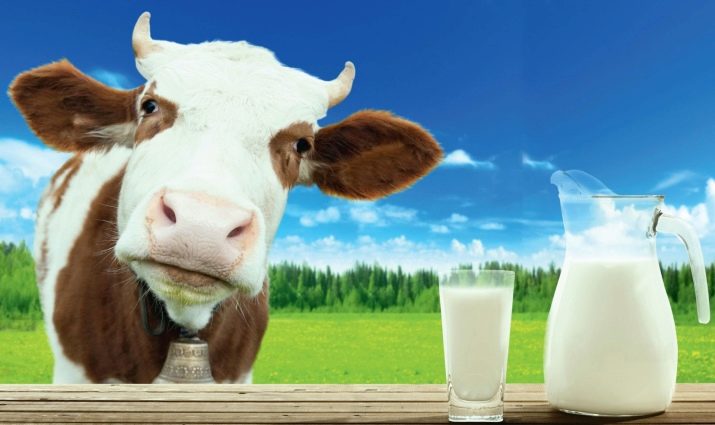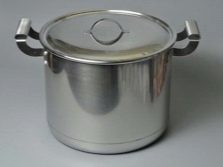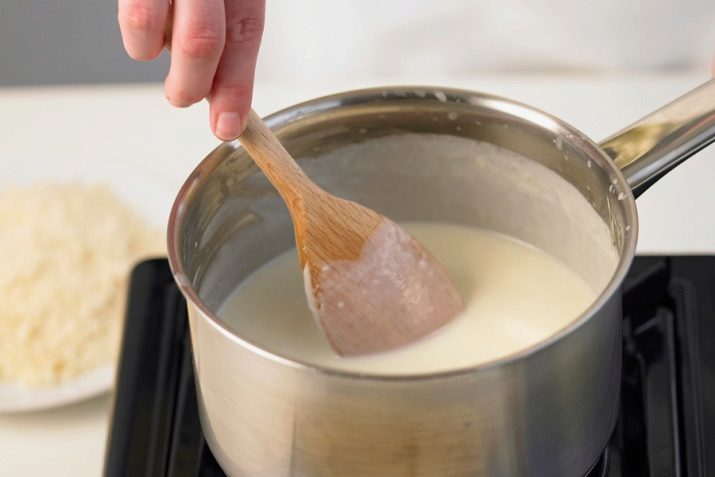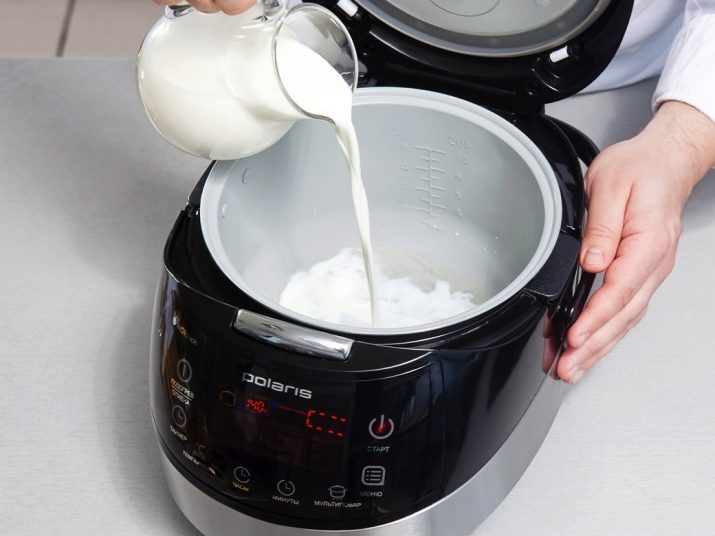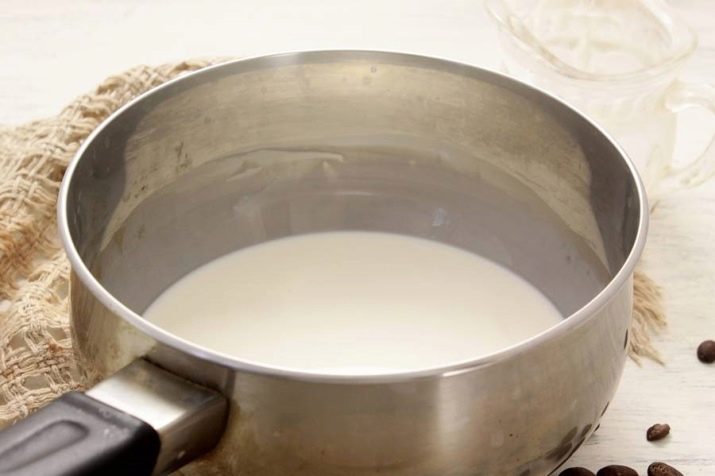How to boil milk?
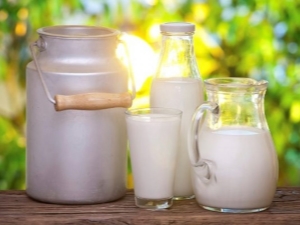
Milk is a very useful product, but in its initial form it can contain microorganisms that are very harmful to human health.To protect yourself from diseases and extend the shelf life of milk, it is recommended to boil it. The process is not so simple, but with the observance of all the rules will bring proper results.
Why do you need to do this?
Growing a cow independently and properly grooming her, you can not be afraid to drink fresh milk. But when buying from other farmers, you need to play it safe and take into account the boiling procedure.
The reasons for which you should definitely boil the home product emit the following.
- The possibility of transferring animal diseases. Due to this fact, dangerous microorganisms can get into the milk. Improper care for a cow leads to the same result.
- Antibiotics may be contained in the product. There is a possibility that they were fed an animal to prevent diseases.
- Due to the content of lactic acid bacteria, fresh milk can turn sour immediately on the day of milking.
- The person who milked the animal, himself could not adhere to the established rules of the procedure.
- Storage and transportation of goods may have been carried out without complying with sanitary norms.
When boiling the following elements disappear:
- pathogenic bacteria from the skin of a cow, a milkman or from the air (the process of boiling helps to kill brucellosis, for example);
- lactic acid bacteria, which are necessary for starter culture (but thanks to this fact, the product is stored longer);
- enzymes that allow the assimilation of the milk mixture to young children (adults can get them from fermented milk products);
- Vitamin C and some others that are little resistant to heat treatment (but there are very few of such components in the initial product);
- immunoglobulins needed only by calves.
But at the same time, the product saves:
- calcium is the most important and useful component;
- a significant proportion of vitamins and microelements;
- fats and milk protein.
Despite all these facts, even in a glass of boiled milk or regular shoplining there is a small amount of high-resistant antibiotics that are added to animal feed in industrial production.
Suitable dishes
Milk tends to stick. In order to avoid this fact, you need to choose the right dishes.
It is recommended to boil the product:
- in an aluminum pan;
- in glass containers;
- in stainless steel tanks.
It is not recommended to carry out the process with an immersion boiler, as this will create a large layer of scale, and the milk around the device will burn. It is also better to take dishes with a thick bottom. Categorically it is impossible to heat milk in the enameled ware.
Process features
First you need to properly prepare the dishes, so that homemade (village) milk does not run away and does not burn, namely:
- rinse the container with cold water;
- on the bottom of the pan to lower the saucer upside down.
The temperature of boiling cow's milk is about 100 degrees. With direct boiling, you need to completely control the whole process and periodically mix the milk. There is no way to do foam here, so you should remove it with a spoon as it forms. Boiling procedure carried out on low heat.
Remove from the stove after 2-3 minutes boiling. It is not necessary to remove the film that appears during the cooling process, since it concentrates a large number of elements necessary for the body.
If the burning could not be avoided, it is recommended to pour the milk as soon as possible into another container, which should be placed in a container with cold water.
Put a pinch of salt in the milk and mix it - this will help remove the unpleasant taste.
In a slow cooker or microwave
To carry out the process of boiling milk can be in the microwave. In this case, more vitamins and minerals evaporate, but not the fact that the disease-causing microbes disappear completely. Therefore, it is better to do it on the stove.
The microwave will help boil the milk for a shorter period of time, preventing it from escaping. To do this, pour the liquid into a regular mug or similar container (just not made of metal) and place a sufficiently long spoon or a stick of wood into it. This method will allow the liquid to evaporate through the hole and prevent the rapid release of foam. It takes 20 seconds to warm the milk, and 2-3 times to get and mix. This will not allow him to escape.
It is also allowed to boil in a slow cooker. To do this, select the mode "Steam / pasta" or "Milk porridge / cereal" (as in Redmond multivaroks, for example) and perform the procedure for 7-10 minutes. You must first remove the valve for steam discharge.
In the electric kettle
In this way, the procedure is not recommended, as the electric kettle is not designed for boiling milk. It does not evaporate, but will simply burn. Fats and proteins, which are contained in the milk mixture, will stand out and form a layer on top. He will not let the milk boil. If there is no steam, the kettle will not turn off by itself. All these facts suggest that milk cannot be heated in a teapot.
How long does it take?
Milk is usually boiled for 2-3 minutes, but to be consumed by a child, some experts recommend increasing the process time to 10 minutes. However, the pathogens die when they reach the boiling point, and it can be quite limited to 3 minutes.
It’s not worth keeping milk on the stove for too long after boiling.
Possible problems and solution
A few helpful tips for better results are described below.
- In the case when a saucer of the required size was not found in the house, you can lubricate the edges of the pan with any fat before adding milk, then it will not burn and not run away.
- So that the milk does not curdle and is not sour, even under hot weather conditions, it can be placed in glass or enameled ware and put in a container with cold water. Cover the device with gauze (towel) on top and place its corners also in water.
- The added teaspoon of sugar in the process of boiling milk will help to increase its shelf life.
- In the light, milk loses a large amount of vitamins, so it is kept in a dark and cool place.
- There is a way to store and without a refrigerator. It is necessary to boil the product 2 times a day, and leave the container open until completely cooled.
Thus, fresh cow's milk should be boiled. Useful properties at the same time will be saved (most of them), but the disease-causing microbes can no longer be afraid.
You will learn more about how to boil milk in the following video.

